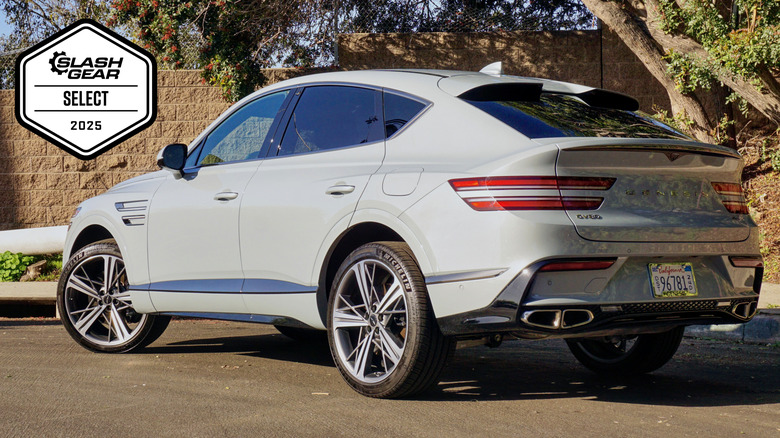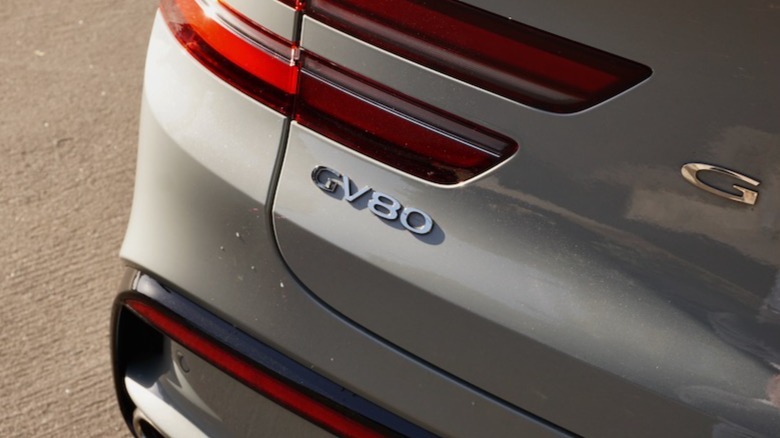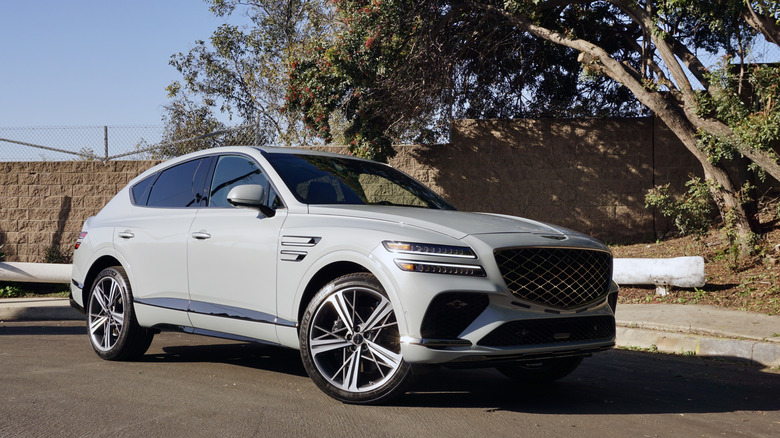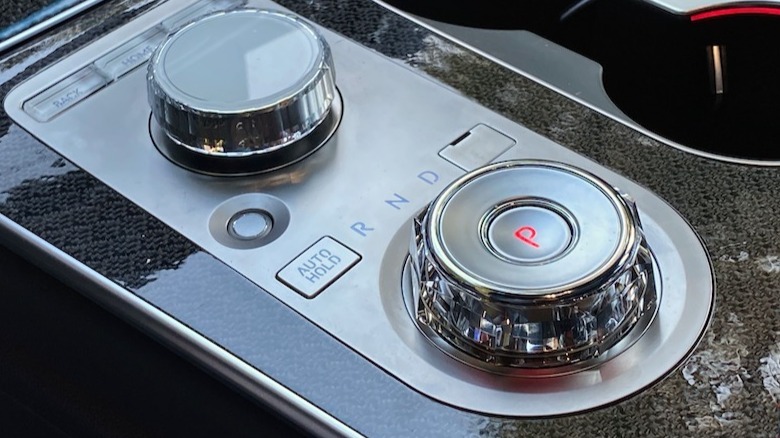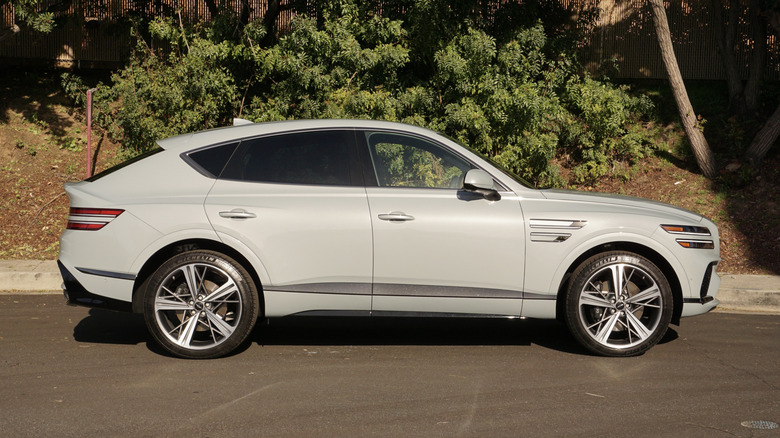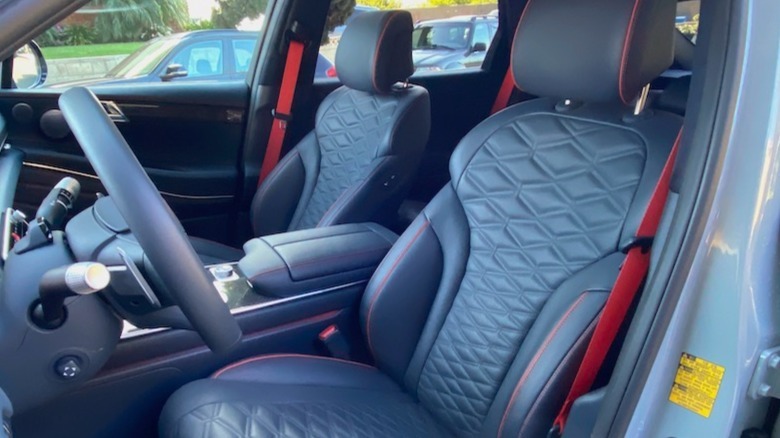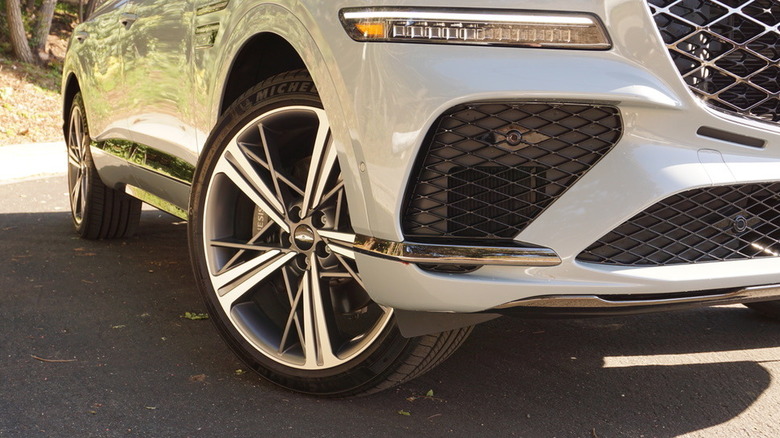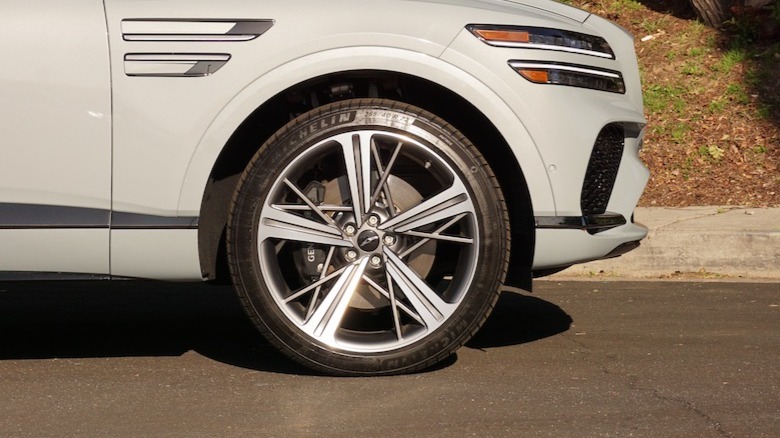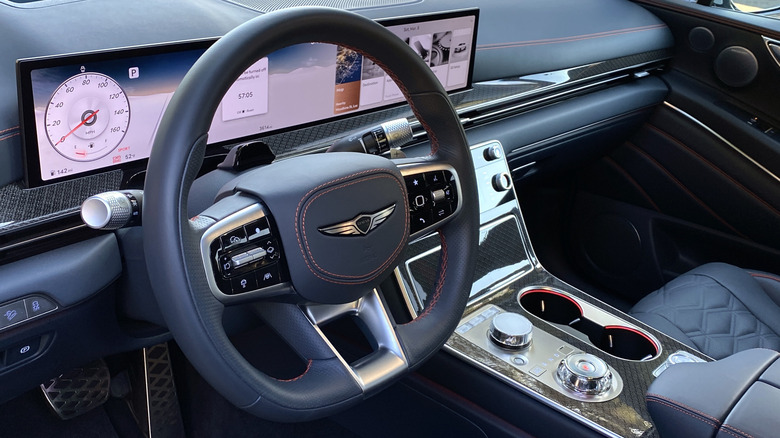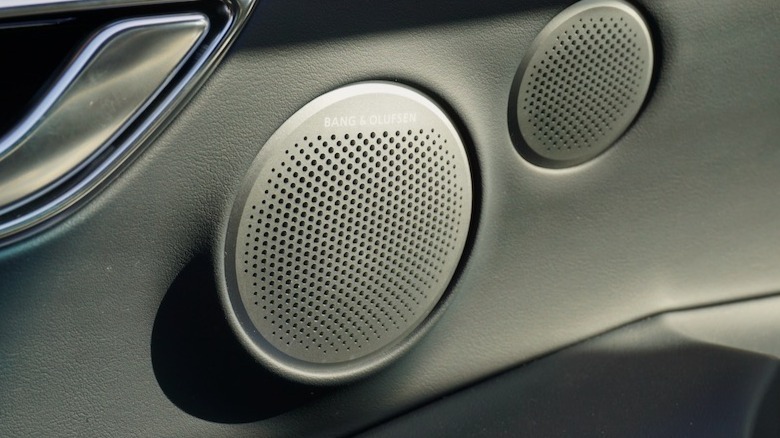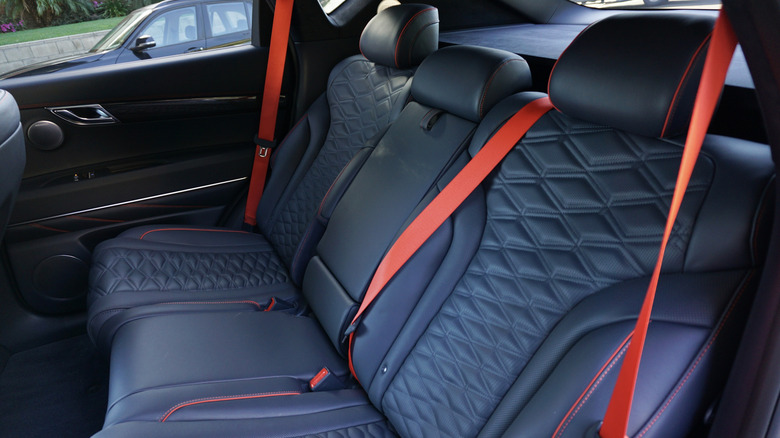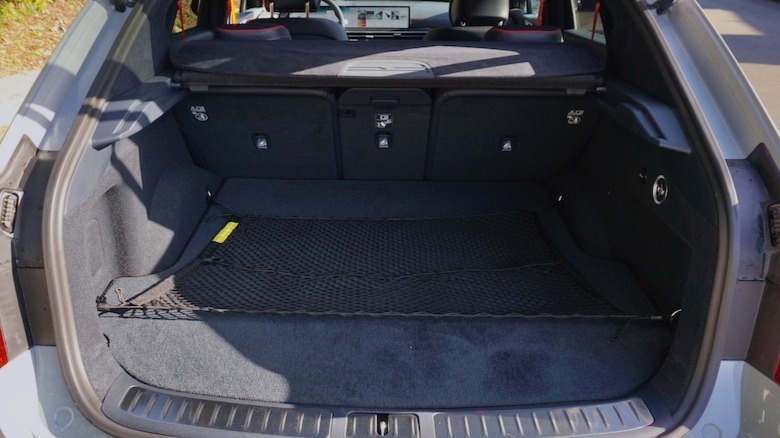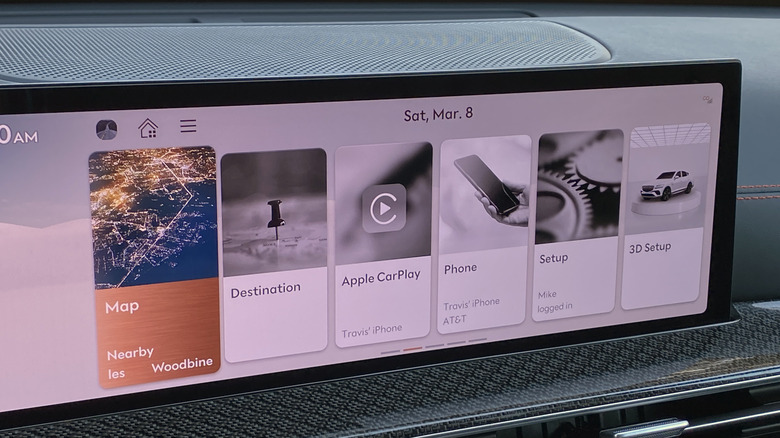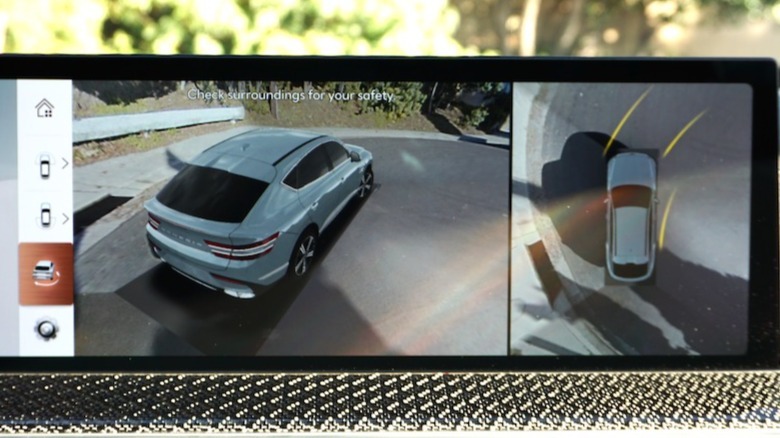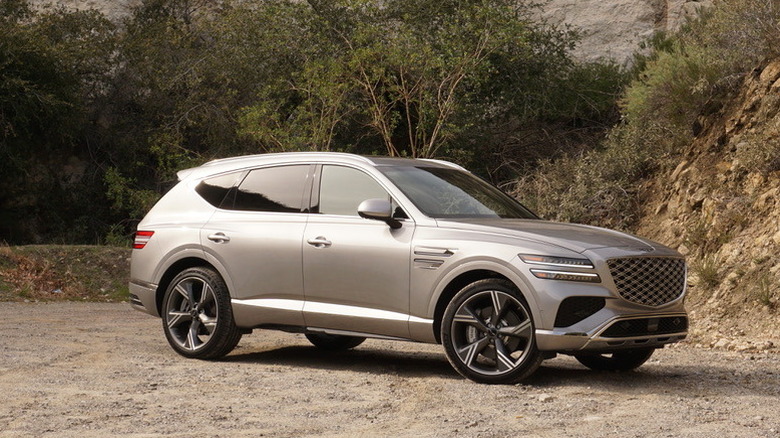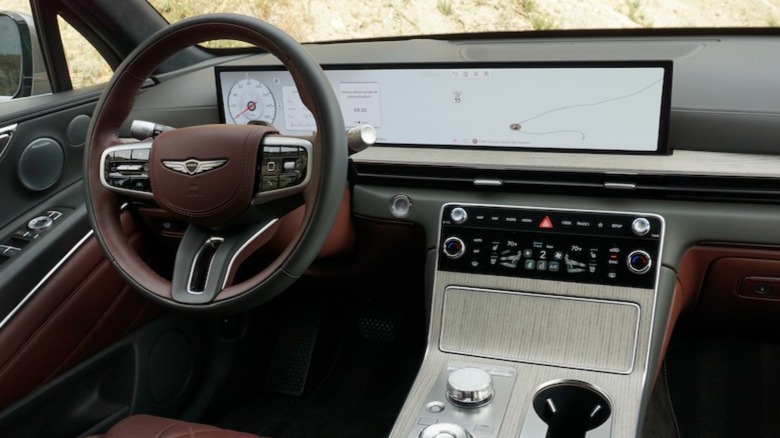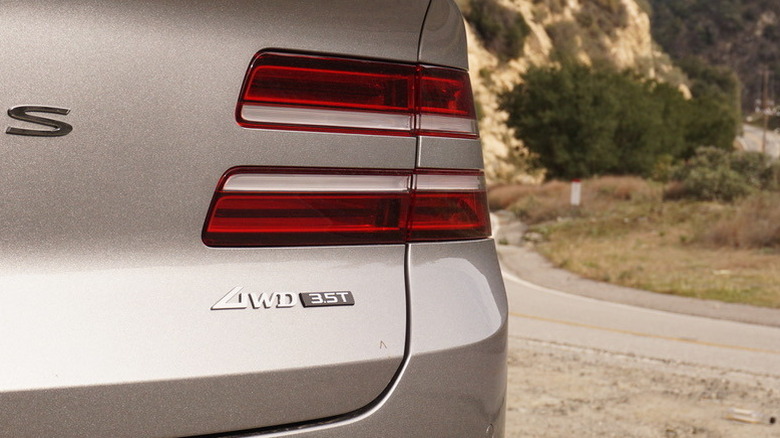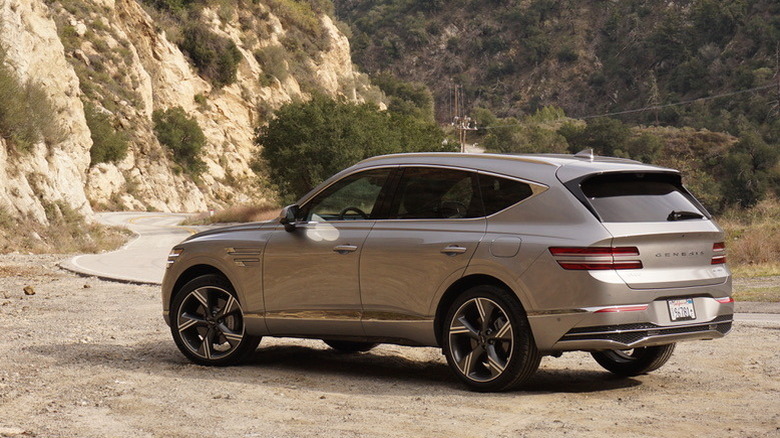2025 Genesis GV80 Coupe Review: E-Supercharger Brings Power, But Is The SUV Still Best?
- Ultra-premium interior
- Impressive low-speed punch from e-supercharger
- High quality materials are everywhere
- Excellent stereo
- Sensitive driver aids
- Touchy throttle in Sport Plus mode
- Coupe is pricey compared to the standard GV80
- 22-inch wheels disturb the ride
Last year, we got behind the wheel of the Genesis GV80 and found it to be an excellent luxury SUV. It was quiet, comfortable, powerful, and every stitch in the cabin felt expertly sewn. Aside from some small issues like the lack of an electrified option (which is available on the smaller GV70) and the cramped nature of the optional third row, Genesis knocked it out of the park with that one.
The all-new 2025 GV80 Coupe seeks to expand on the appeal of that excellent vehicle by introducing a sloping rear roofline that sets it apart from its sibling. A sloping roofline that makes an SUV look more like a coupe while simultaneously reducing headroom isn't everyone's idea of a good time, but it's a pretty popular trend amongst luxury SUVs. To that end, you can't blame Genesis for following in the footsteps of other automakers, but as a trend it remains a head-scratcher.
Along with the seemingly-more appealing style choice, the GV80 Coupe also adds a few other distinctions. For starters, there's no third row option: it wouldn't make much sense with decreased interior space. Then, there's the powertrain. The electrification we were missing in the standard model shows up in a small, untraditional way, via an electric-powered supercharger. The standard model gets a twin-turbocharged 3.5-liter V6, but the Coupe pairs that engine with a 48-volt electric supercharger for even more power and better fuel economy. It's not a full EV, but it's certainly intriguing.
Power is delivered in a unique way
Standard power for the GV80 Coupe is provided by a twin-turbocharged 3.5-liter V6 that puts out 375 horsepower and 391 lb-ft of torque. It's the same powertrain that provides thrust for top-trim versions of the regular GV80. The e-Supercharger model brings those numbers up to 409 hp and 405 lb-ft of torque, and while those increases aren't particularly big on paper, they influence the GV80's power delivery, especially at low RPMs. The e-Supercharger activates below 1,750 RPM and increases low-end output, with a significant increase in torque low in the rev range that's most noticeable in Sport Plus mode.
In Comfort mode, the GV80 Coupe's acceleration is adequate, but not shocking. It's tuned properly for most city-driving scenarios and the added torque down low is a noticeable benefit. Sport Plus mode, however, is much more sensitive. Flex your big toe and the Genesis SUV lurches forward. It's not what I would call twitchy, but there's a significant difference between Comfort, Sport, and Sport Plus: enough to keep me from engaging the Sport Plus without some seriously speedy intentions.
Through the rest of the powerband, and up to highway speeds, the GV80 Coupe does battle with its significant heft, but it gains momentum at a respectable pace. Upshifts from the 8-speed automatic transmission are quick and crisp, and if you need to drop a few gears for a passing maneuver, just bury your right foot in the throttle and the GV80 Coupe is happy to oblige.
No more straightaways
Familiarizing myself with the GV80 Coupe's acceleration capabilities took some getting used to, but once I was acquainted with the drive modes, I threw some curves into the mix. The steering wheel felt well-weighted enough for an enjoyable drive in the mountains, albeit a bit heavy in Sport Plus mode.
In the Eco and Comfort settings, the GV80 Coupe felt relatively light on its feet; that's the right setting if you're moving around in tight spaces like parking lots. Carrying some significant speed through corners, there wasn't much body roll in any of the modes, Sport and Sport Plus least of all.
The GV80 Coupe comes standard with an electronic limited slip differential that helps keep power delivery even through corners, but what impressed me more was the Ergo Motion seat, available in only two of Genesis' cars: the GV80 and the G80 sedan. On top of being heated, ventilated, and hyper-adjustable, the driver's seat increases seat bolster support when you're driving quickly. Go around a hard right hander and the left bolster bulks up like a bodybuilder posing for a photo. Attack a left-hand corner, the right bolster will engage to keep you planted too. The side bolsters in their standard positions were more than adequate enough to hold me in place during a few quick blasts up the canyon, but the extra support meant I was glued to a singular spot in my chair.
Enough comfort to go around
When the GV80 Coupe first arrived at my home, I took a closer look, checking out the options, getting the seating position right, and adjusting the mirrors. As I looked around the car I was surprised to see such huge wheels: 22-inches in diameter. They contribute to the upscale look of the GV80 Coupe, but they felt unnecessarily large.
Typically with large wheels and a thin tire sidewall, there's a lot of highway discomfort. Sure enough, over the roughest streets in Los Angeles, there was certainly some discomfort in the GV80 Coupe. Sharp impacts from potholes or road imperfections shocked the interior a bit, though were shrugged off relatively quickly. At this point, I'd usually recommend the smaller 20-inch wheels, but you can't have them with the e-Supercharger version of the Coupe.
Braking in the GV80 is done via 14.9-inch front rotors and 4-piston calipers, teamed up with 14.2-inch rotors in the rear with single-piston calipers. For a moment, during my drive, I thought the big brakes might be what necessitated those large 22-inch wheels, but no: the standard GV80 Coupe gets the same size brakes and it rolls on 20s, no problem. Even with those large brakes, the GV80 Coupe's beefy curb weight of 5,203 lbs was a significant mass to bring to a halt. It's fun to drive quickly, but the GV80 has some serious heft.
A hushed and pleasant space
No matter what kind of surface I drove it over, or at what pace, the interior of the GV80 Coupe was impressively quiet. On the most broken and battered Los Angeles freeways, there's only the slightest hum from the tires. I did a few hundred miles in the GV80 in just a few days, but was never worn down or distracted by any noises.
The seats, the center console, the dashboard, and the door cards all feel like they're built from high-quality materials. The only place I could find a small fault with the materials choice was the shifter paddles. Instead of a chunky, robust metal (or at least a metal analog) they felt a bit more like buttons. I wanted them to make a "clunk, but " they went with a "click."
Rather than listen to the sound of the paddle shifters, I spent a significant amount of time cranking the GV80 Coupe's stereo up to maximum volume. Listening to my favorite tracks in the GV80 Coupe was a joy. The 18-speaker Bang & Olufsen sound system uses a 12-channel amp and has 1,400 watts of output which provides more than enough volume to blow your hair back a bit. Audiophiles won't be disappointed.
Plenty of space to stretch out
Going with the GV80 Coupe means you get slightly less rear headroom and less cargo space than with the standard model–it's the price you pay for style–but that doesn't mean the Coupe is cramped. Headroom and legroom in the first row of both SUVs is identical, at 40.2 inches and 41.6 inches, respectively. In the Coupe, 0.8 inches of second row headroom are sacrificed for the stylish roofline, and there's no loss in legroom – still 38.7 inches.
It's worth remembering that this platform is built with three rows in mind, even if you only get the full trio on the standard GV80. Without a third row available, that means second-row passengers in the GV80 Coupe have all the space they'll need. Got a friend who played center on their high-school basketball team? They'll have no problem stretching their legs in the back seat. Cargo space, however, takes a slightly larger hit in the Coupe. It drops from 36.5 cubic feet of cargo space in the standard model to just 30.3 cubes in the Coupe. That should still be enough room for a few large suitcases on your way to the airport, and some carry-on's to spare.
A big screen but some underwhelming driver aids
On top of being a serene environment for commuting and road trips, I really like the color scheme in this particular GV80 Coupe: Ultramarine Blue with Orange Stitch. It felt sporty, luxurious, and upscale, all without feeling gaudy or tacky. The placement of the massive 27-inch screen we've seen in other Genesis cars was excellent too. The interface controls several important functions, but it's low enough on the dashboard that it isn't distracting when you're looking at the road ahead.
Some climate control functions are found inside a lower touchscreen, which is normally a demerit when it comes to drawing your attention away from the road. Thankfully, there are large, dedicated knobs as well. Climate functions and the touchscreen controls respond quickly to commands so there's no delay turning up the temperature when it's cold out.
If the GV80 Coupe has an achilles heel in the tech department, however, it's the sensitivity of its driver aids. Lane keep assist, forward collision warning, and adaptive cruise were all too sensitive for me. While I was parallel parking, the Genesis hit the brakes hard on multiple occasions. Each time it did this, I still had plenty of room to maneuver. The surround view monitor that gives a sort of three-quarters birds-eye view is ultra-high resolution and felt like it would be a useful aid for squeezing into tight spaces, but it only worked well if I had enough space by the parking sensors' conservative standards.
Driving the two top models
After driving the GV80 Coupe around for a week, I got behind the wheel of the standard GV80. Specifically, I drove the GV80 in the Prestige trim with the 3.5-liter V6. This gave me an excellent opportunity to compare the two trims and decide whether the upgrade to the Coupe was worth it.
On the inside, the standard GV80 felt just as plush and inviting. Both SUVs elicited compliments from complete strangers in grocery store parking lots, when stopped at red lights, and even driving on local canyon roads: there was no difference in perceived quality from me or from the outside world.
The standard GV80 was also just as entertaining to drive, with just as many impressive features. The GV80 and its Coupe variant have a wide range of prices, starting at $59,550 (including $1,350 destination fee) for the base 2.5T model, going all the way up to a starting price of $87,100 for the e-supercharged Coupe. But just below the top GV80 Coupe, the GV80 SUV in its Prestige trim is a much more appealing buy. It offers more cargo space, an available third row, and a significantly lower price.
Pricing and fuel economy vary widely
The as-tested price of the GV80 SUV you see here was $81,300, while the e-supercharged Coupe ballooned up to $87,780. That's a big increase in price for a relatively modest increase in performance, and there isn't much of a case for the price difference at the pump either.
With the 3.5-liter engine and all-wheel drive, the GV80 and its Coupe sibling both get a fuel-economy rating of 19 mpg combined (16 city 22 highway) from the EPA. Add the e-supercharger to the mix and the combined fuel economy estimate goes up to 20 mpg (18 city/22 highway).
The big benefit there is in city driving, but the most-efficient version of the GV80 is the standard model with the 2.5-liter four-cylinder engine. It checks in at 21 mpg combined. Driving both SUVs back to back, I didn't see much of a difference in fuel economy; certainly not a big-enough real-world difference to justify a $6,480 price gap.
2025 Genesis GV80 Coupe Verdict
Seeing the price difference between these two SUVs on paper, and then testing them both in the real world, I came to two conclusions. My first was that I really enjoyed driving both of them. Cruising on the open highway, commuting in the crowded city, and darting up curving mountain roads all proved to be highly enjoyable experiences, in both the Coupe and the standard GV80.
My second conclusion was that I saw no need to upgrade to the Coupe. I don't think the Coupe looks much better; sure, I like the sloping roofline of the Coupe, but the standard model is plenty handsome without it. The addition of the e-supercharger to the 3.5-liter V6 is an interesting and technologically impressive difference, meanwhile, but it doesn't significantly enhance the driving experience. There's no difference in quality, craftsmanship, or tech between the two models that would steer me away from the standard GV80.
